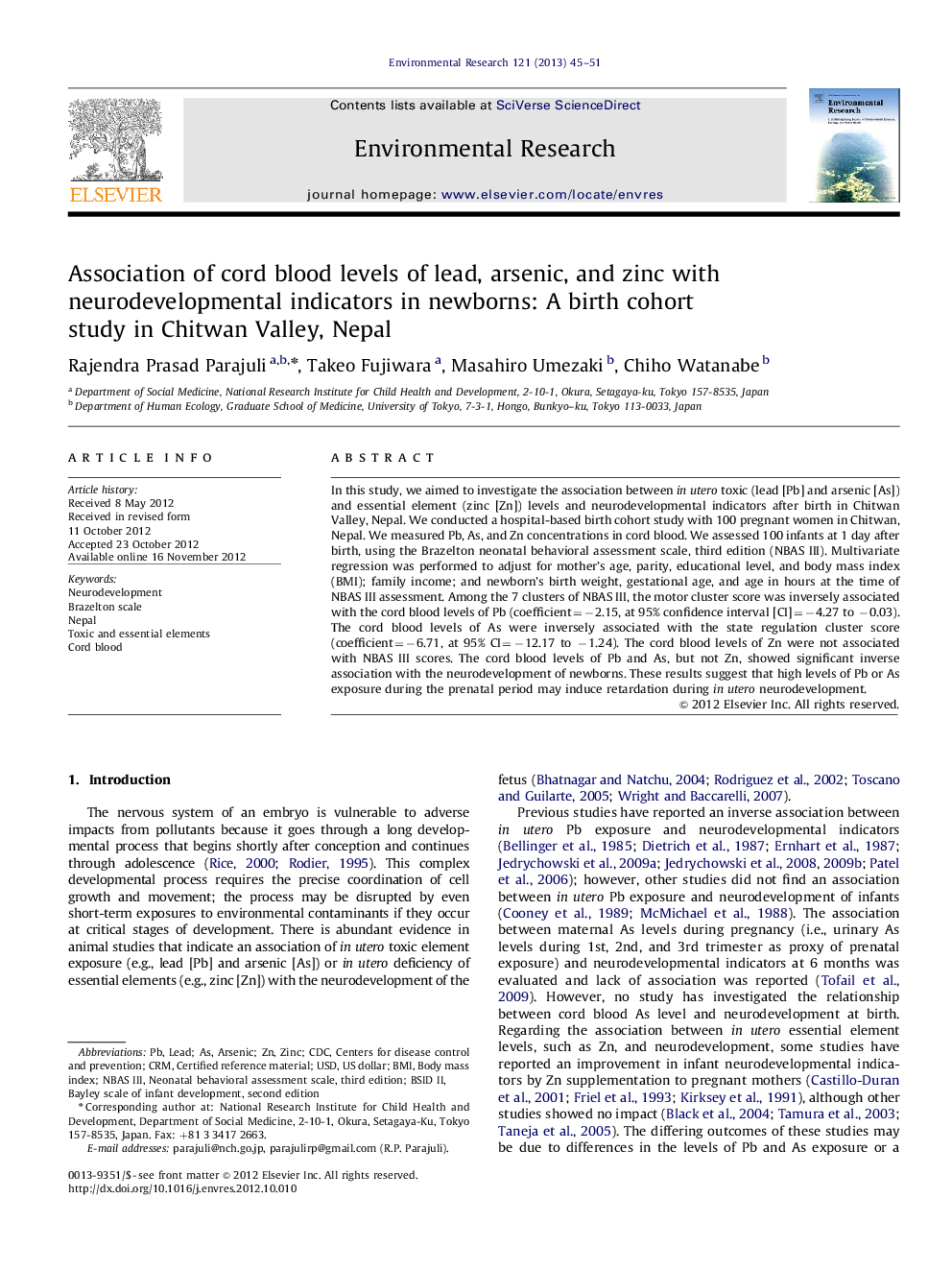| کد مقاله | کد نشریه | سال انتشار | مقاله انگلیسی | نسخه تمام متن |
|---|---|---|---|---|
| 4469814 | 1622580 | 2013 | 7 صفحه PDF | دانلود رایگان |

In this study, we aimed to investigate the association between in utero toxic (lead [Pb] and arsenic [As]) and essential element (zinc [Zn]) levels and neurodevelopmental indicators after birth in Chitwan Valley, Nepal. We conducted a hospital-based birth cohort study with 100 pregnant women in Chitwan, Nepal. We measured Pb, As, and Zn concentrations in cord blood. We assessed 100 infants at 1 day after birth, using the Brazelton neonatal behavioral assessment scale, third edition (NBAS III). Multivariate regression was performed to adjust for mother's age, parity, educational level, and body mass index (BMI); family income; and newborn's birth weight, gestational age, and age in hours at the time of NBAS III assessment. Among the 7 clusters of NBAS III, the motor cluster score was inversely associated with the cord blood levels of Pb (coefficient=−2.15, at 95% confidence interval [CI]=−4.27 to −0.03). The cord blood levels of As were inversely associated with the state regulation cluster score (coefficient=−6.71, at 95% CI=−12.17 to −1.24). The cord blood levels of Zn were not associated with NBAS III scores. The cord blood levels of Pb and As, but not Zn, showed significant inverse association with the neurodevelopment of newborns. These results suggest that high levels of Pb or As exposure during the prenatal period may induce retardation during in utero neurodevelopment.
► In utero lead exposed babies scored low in motor cluster of Brazelton scale.
► In utero arsenic exposed babies scored low in state regulation cluster of the scale.
► Impaired neurodevelopment observed among arsenic exposed newborns for the first time.
► Reported zinc deficiency in Terai is not observed in this cohort babies.
► In utero zinc level was not associated with any Brazelton scale cluster score at birth.
Journal: Environmental Research - Volume 121, February 2013, Pages 45–51